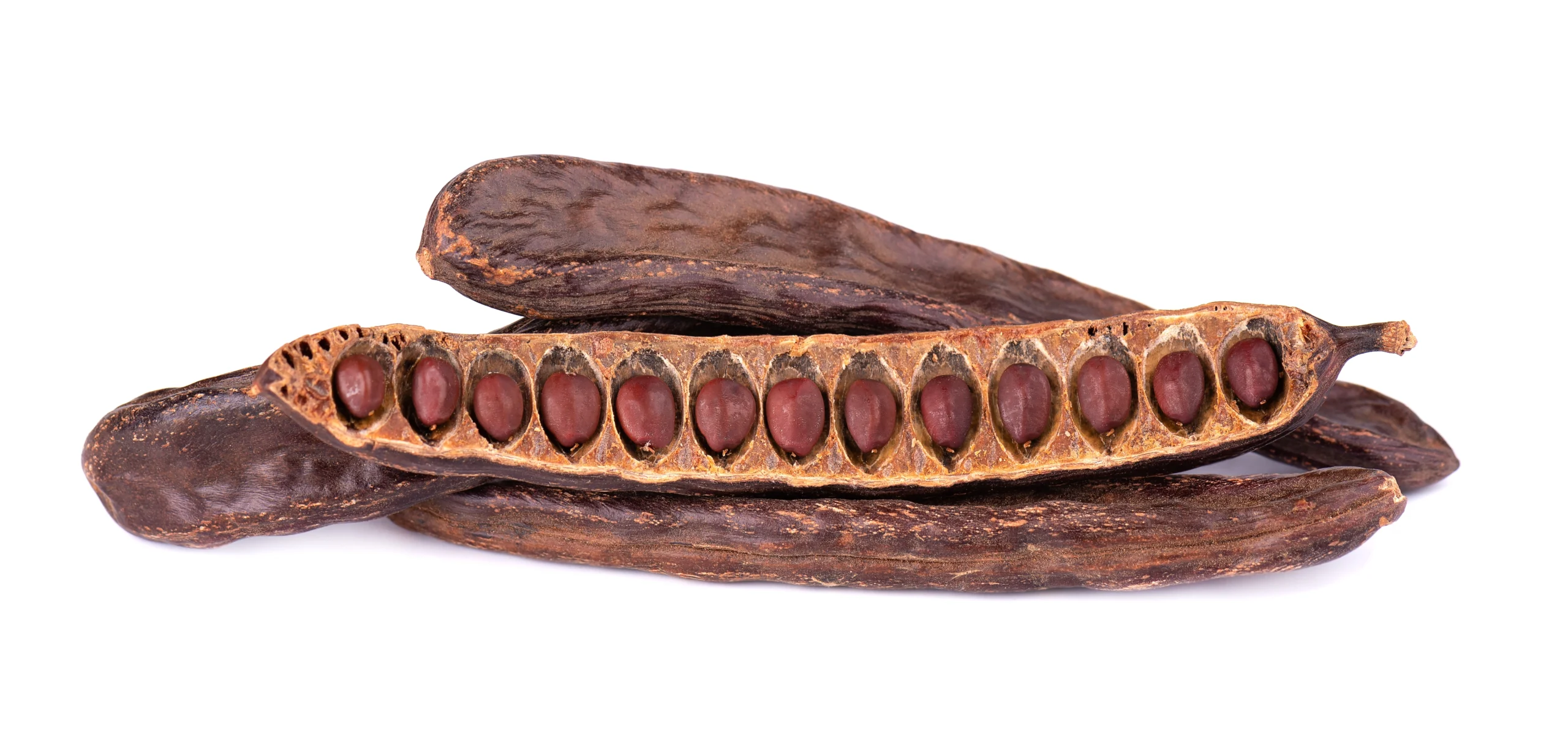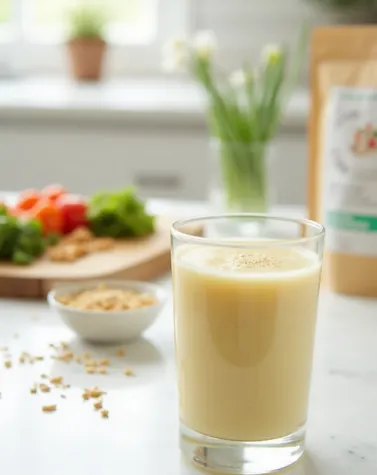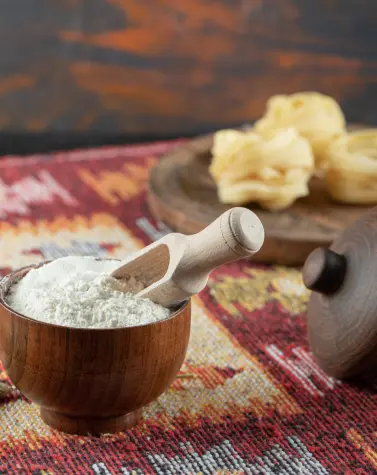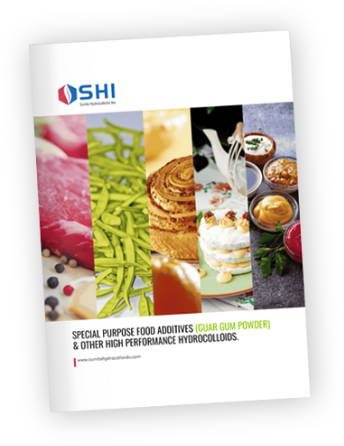
Locust Bean Gum vs Guar Gum: Key Differences and Uses in the Food Industry
In today’s food industry, texture and stability are key to product success. Locust bean gum and guar gum are the two powerful, plant based hydrocolloids used to get the right texture in food products. From the carob tree and guar plant, locust bean gum and guar gum are natural alternatives to synthetic additives that consumers want to avoid.
Often labeled as carob gum (locust bean) and bean gum (guar), these natural additives have unique benefits across food categories as stabilizers, emulsifiers and fat replacers. Their growing use in gluten free, low fat and clean label products shows how important they are in health conscious food innovation.
Chemical Composition and Properties
Guar gum and locust bean gum (carob bean gum) both belong to the galactomannan family, a class of polysaccharides that combine mannose and galactose sugars. But they are slightly different in structure and behavior.
- Locust bean gum – has higher molecular weight and fewer galactose side chains. Due to this, locust bean gum has more thickening power and gel forming ability especially when combined with other gums like xanthan.
- Guar gum – has more galactose branches and hydrates faster and more evenly especially in cold water which makes it easier to disperse.
These structural differences affect their solubility, viscosity and synergy with other food ingredients.
Extraction and Production Process
The production process of guar gum powder is similar to that of locust gum with special attention to gum purity and particle size.
- Locust bean gum – is a natural hydrocolloid, extracted from the seed endosperm of the carob tree (Ceratonia siliqua), primarily grown in the Mediterranean regions. Its production process involves hull removal, splitting and milling the endosperm of the seeds to produce a fine locust bean gum powder.
- Guar gum – is extracted from the seeds of the guar plant, mainly cultivated in India and Pakistan. Guar bean primarily goes through a process involving splitting the seeds, removing the husk and germ and then milling the remaining endosperm. The endosperm is then further processed to produce a powder form which can be further purified for specific applications.
Though both gums go through similar grinding and sieving process, processing methods can affect final viscosity, hydration rate and microbial quality which are key for food manufacturers.
Functional Properties in Food Products
Some characteristics of guar gum and locust bean gum are similar while others set them apart and we explore them all.
Guar Gum & Locust Bean Gum Similarities
Guar gum and locust bean gum have many similarities in their functional benefits such as:
- Thickening and Stabilizing: These gums help attain the desired texture and suspension and smooth consistency in ice creams, yoghurts and soups.
- Emulsification: Both gums bind oil and water in sauces and dressings, prevent separation and enhance mouthfeel.
- Fat Replacement: Guar gum and locust bean gum’s water binding properties mimic fat and gives creamy texture in low fat meats and plant based foods.
Locust Bean Gum vs Guar Gum – Differences
Each of the following properties makes locust bean gum and guar gum valuable in different food applications.
| Feature | Locust Bean Gum | Guar Gum |
| Source | Carob Tree | Guar Bean |
| Viscosity | Higher | Moderate |
| Cold Water Solubility | Slower | Faster |
| Gel Formation | Yes (with synergy) | Limited |
| Cost | Higher | More Affordable |
| Flavor Impact | Neutral | Slightly earthy |
Locust bean gum and guar gum differ in solubility, gelling and thickening properties.
- Solubility – Guar gum dissolves easily in cold water, forming a thick, viscous solution. Locust bean gum requires heat for full solubility, making it ideal for applications where controlled thickening is needed. Guar gum hydrates quickly while locust bean gum takes longer to reach peak viscosity.
- Gelling Agent – Locust bean gum enhances gel strength when paired with xanthan gum or carrageenan, making it ideal for creamy desserts and confectionery items. Guar gum’s higher viscosity makes it excellent for thickening.
So locust bean gum is ideal for products that need strong gel networks and guar gum is better for high volume, cost effective thickening.
Locust Bean Gum vs Guar Gum In Gluten Free Baking
In gluten free recipes, structure is often a challenge. Here’s how guar gum and locust bean gum help.
- Guar gum – is the preferred binder in gluten free doughs and batters due to its solubility in cold water and fast hydration.
- Locust bean gum – while less commonly used alone in baking, can be combined with other gums for enhanced elasticity and chewiness.
Both help prevent crumbly textures and ensure that gluten free products have a moist, cohesive structure.
Cooking Loss and Moisture Content
In meat product and plant based protein products, both guar gum and locust bean gum offer excellent moisture retention benefits to:
- Reduce cooking loss
- Maintain juiciness and texture
- Extend shelf life
- Improve freeze thaw stability
This is especially important in low fat formulations that would otherwise dry out or shrink during cooking.
Locust Bean Gum and Guar Gum Food Applications
Versatile and multifunctional, guar gum and locust bean gums are used in:
- Ice Creams: to prevent ice crystal growth and enhance creaminess
- Dairy: to improve consistency in cheese spreads and yogurts
- Bakery: to boost dough elasticity and shelf life
- Meat Analogues: acting as fat mimetics and binders
Their use spans from traditional to next gen food products, including vegan, keto and clean label formulations.
Want to explore more about guar gum and its role in food innovation?
Check out these related articles for deeper insights:
- Guar Gum in Food Industry – Learn how guar gum enhances texture, stability, and shelf life across food categories.
- What is Guar Gum? – A comprehensive guide to guar gum’s origin, functionality, and health aspects.
- Is Guar Gum Gluten-Free? – Understand how guar gum supports gluten-free formulations and improves product quality.
Locust Bean Gum and Guar Gum Market Analysis
The demand for natural, sustainable food additives is driving interest in both locust bean gum and guar gum.
- Guar gum dominates due to lower price and a strong production base in India.
- Locust bean gum is favored for premium products where texture precision is critical.
Clean label trends, transparency and consumer demand for fiber rich, plant based products suggest continued market growth.
What is driving plant based Gums’ Market Demand?
Today’s consumers want to know what is in the processed foods they consume. They are health conscious and prefer plant based, healthy ingredients and this is driving demand for guar gum and locust gum. Clear labeling of gums and educational messaging about fibre benefits, vegan friendliness and natural sourcing builds brand appeal. That is why retailers and food brands are using this to explain how these gums improve product quality and get more sales.
Sustainability and Environmental Impact
Both gums come from renewable plant sources.
- Guar farming supports rural economies in dryland areas.
- Carob trees are drought resistant and contribute to soil conservation.
Manufacturers are investing in eco friendly processing, waste reduction and supply chain transparency to align with sustainability goals.
Regulatory Framework
Both locust bean gum and guar gum are approved for use under global food safety standards:
- Listed as E410 (locust bean gum) and E412 (guar gum) in the EU
- Approved by FDA, EFSA, and Codex Alimentarius
- Subject to purity, microbiological, and labeling regulations
Staying compliant with changing international standards is crucial for global product distribution.
Conclusion
Locust bean gum and guar gum are essential tools in the food technologist’s toolkit. While they share similar roots as natural galactomannans, their unique properties, cost differences and use cases make them suited for different formulation strategies.
When choosing between them, consider the texture, solubility, hydration, cost and sourcing and labeling requirements. By making informed choices, brands can create high performing, clean label and consumer friendly products that stand out in today’s food market.





